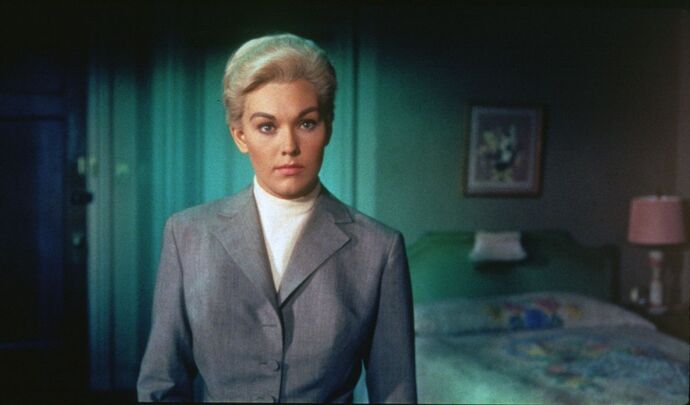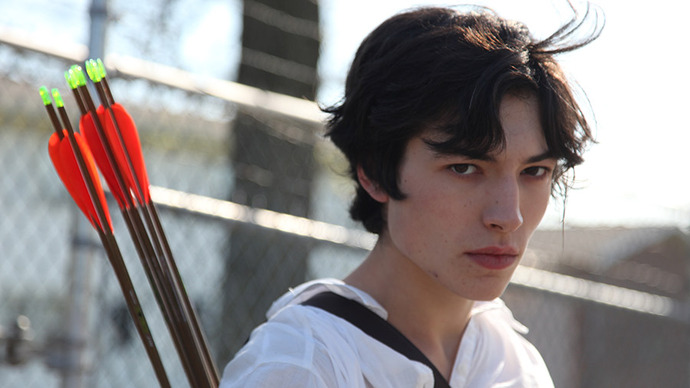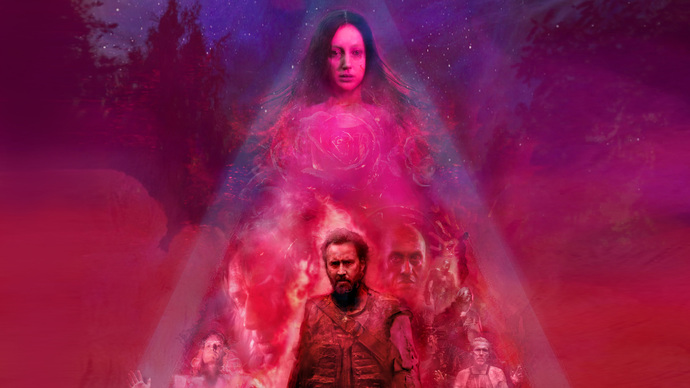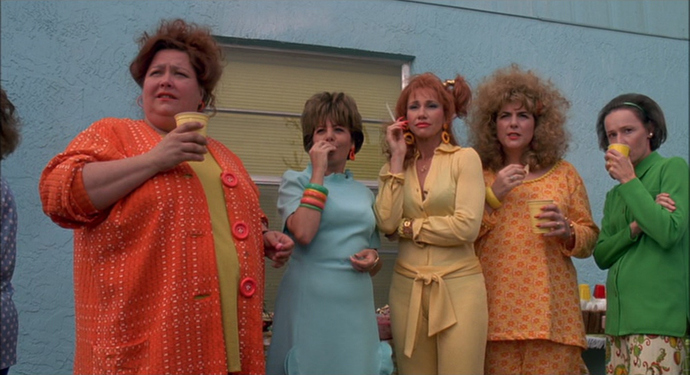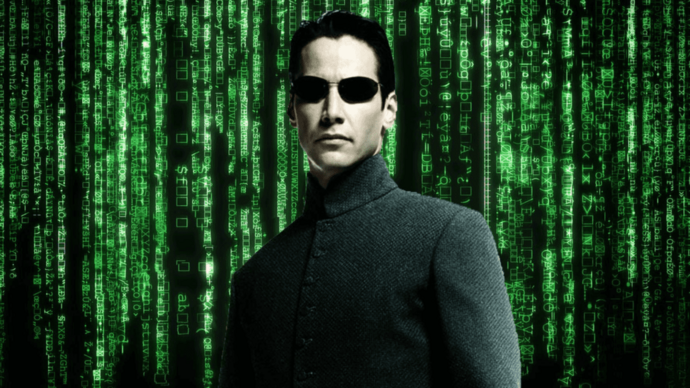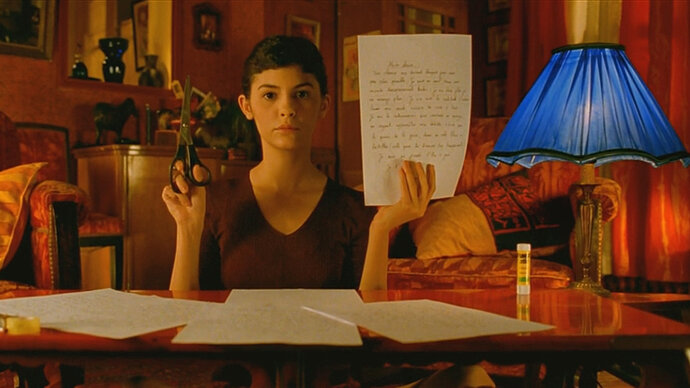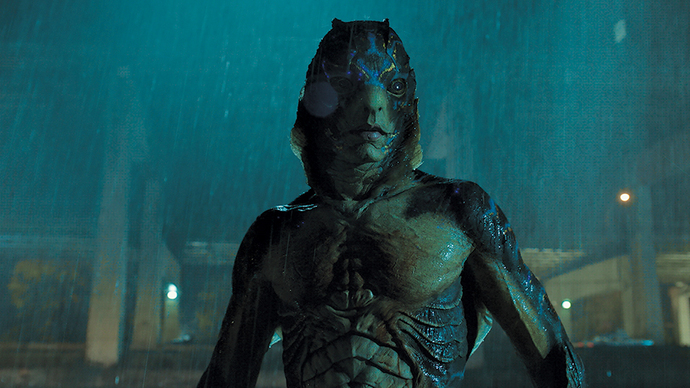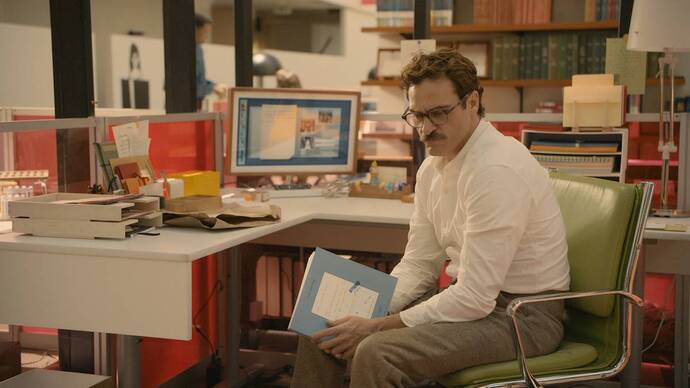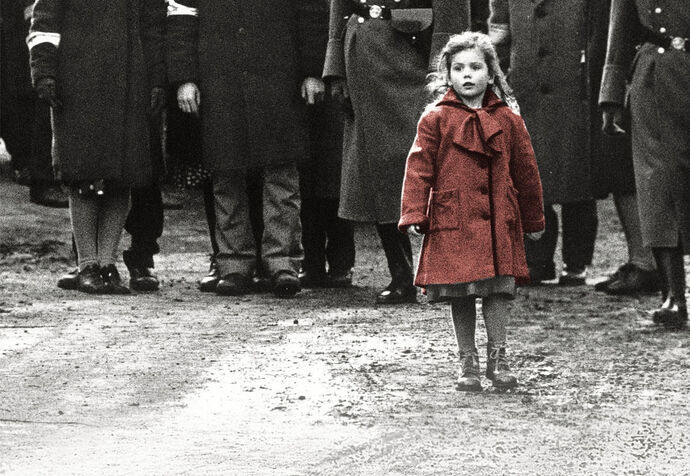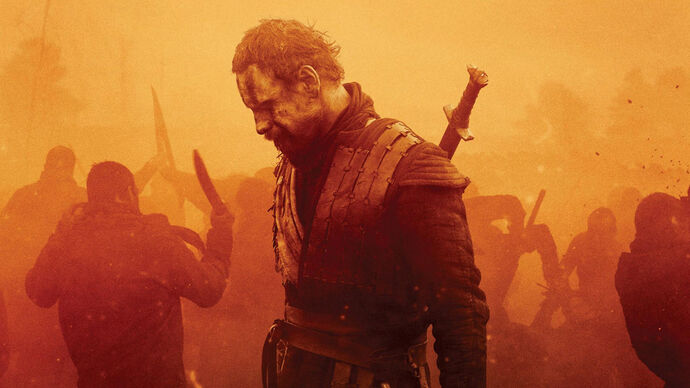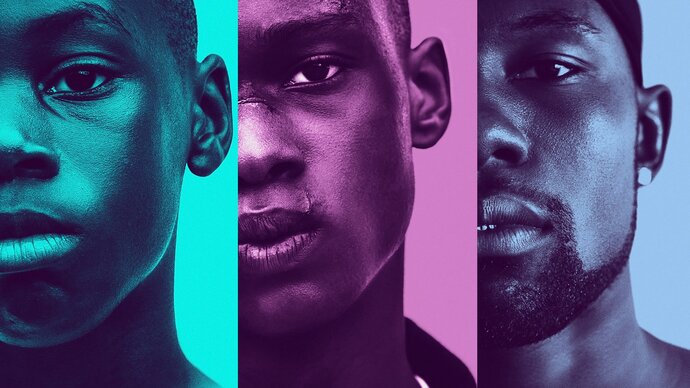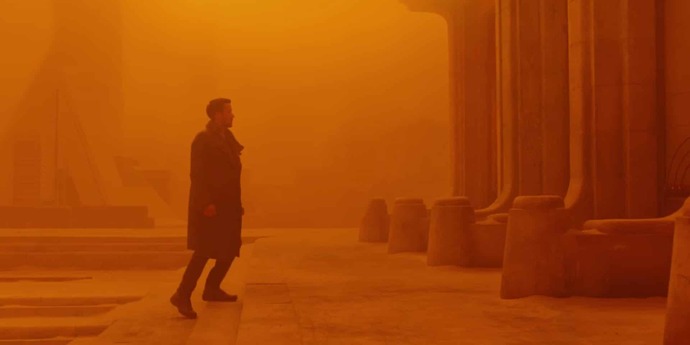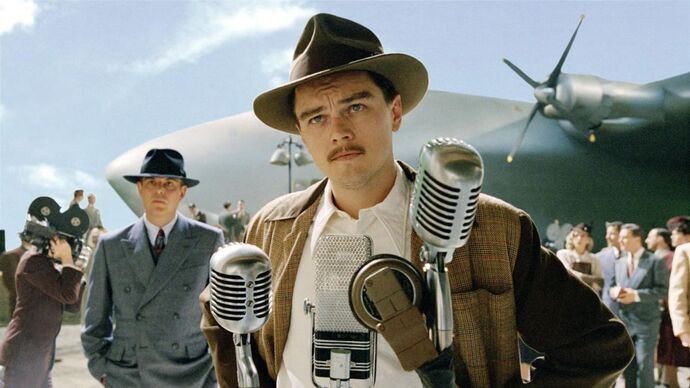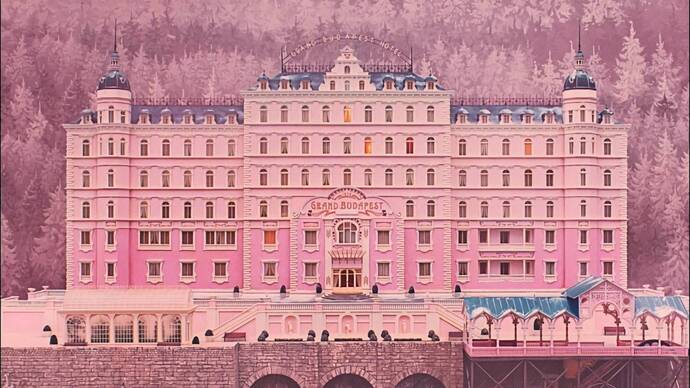Moving pictures are exactly that: pictures that move. Every single frame can be its own painting, carefully crafted to evoke so many emotions. Lighting, wardrobe, camera angles, and frame composition all feed into this, but the color palette brings it all together. Colors can be used for all kinds of purposes, whether to set the mood, enhance a theme, cause dissonance in the viewer, or simply to look cool and stand out by using unusual hues. Here are some of the most interesting color palettes used in cinema and how they shaped their respective stories.
14. Vertigo (1958)
We could spend hours deconstructing Alfred Hitchcock’s Vertigo. Now heralded as a masterpiece, the thriller was initially rejected by audiences, some of whom walked out of theaters midway through. The plot twist came at the middle rather than the end, and viewers were so used to seeing their American sweetheart Jimmy Stewart play the good guy that they were offended when he was revealed as a creep. But that’s a nonsensical reason to hate on a film. Poke deeper and it turns out that Vertigo has a lot to unpack within its frames, including the way it played with two main colors: red and green. Opposite on the color wheel, red often symbolizes passion, love, and obsession, whereas green often denotes the illusionary, a dissociation from reality. In Vertigo, Madeleine (Kim Novak) wears a green dress and her doppelgänger is surrounded by an aura of green to represent Madeleine’s mysterious life and death that Scottie (Jimmy Stewart) is so obsessed with—himself dressed in red.
13. We Need to Talk About Kevin (2011)
Red is often used as the color of passion, obsession, danger… and blood. It’s a stark hue that pops up often in Lynne Ramsay’s disturbing film We Need to Talk About Kevin about the upbringing of a school shooter. What’s initially surprising is how Kevin isn’t traumatized as a child by his mother; instead, it’s the other way around. Kevin (Ezra Miller) taunts his mother Eva (Tilda Swinton) from the very minute he’s born, but acts the angel towards everyone else. The recurring motif of red represents Kevin’s violent nature and foreshadows his eventual killings. The tomato fight and red spray paint suggest that blood is a stain on Kevin’s life—one that Eva cannot escape as she tries to wipe it off her face only to add more. Even when the red is sparing (e.g. t-shirts and posters), it’s still always there, lingering in the background—just like Kevin, who’s a ticking time bomb of destruction that only Eva can see.
12. Mandy (2018)
Filmmakers sure do love the color red! But unlike in We Need to Talk About Kevin, which precisely splatters red against the white mise-en-scene like a Pollock painting, Mandy is flooded with crimson. Panos Cosmatos mimics a 1980s revenge flick in this indie horror, dedicated to composer Jóhann Jóhannsson. Nicolas Cage stars in one of his zanier roles as Red Miller—yes, even his name is red—who hunts down a cult that burned his girlfriend alive. Sadomasochistic Satanists who love LSD aren’t exactly the type of people you want to get involved with. If red symbolizes the love between Red and Mandy (Andrea Riseborough) at the start of the film, it quickly turns into the blood of her sacrifice and Red’s rabid vengeance. The dialogue in Mandy is economical, making space for the film to serve up surreal visuals instead. The psychedelic hues get us into the headspace of the acid-tripping folk cult, with red smoke drafting into every corner of our screen like Red’s inescapable grief.
11. Edward Scissorhands (1990)
As a world-renowned goth, most of Tim Burton’s filmography is (unsurprisingly) made up of blacks and grays. However, Edward Scissorhands is a bit different from his usual fare. On the surface, Edward Scissorhands (Johnny Depp) is an emo-looking humanoid: paper white skin, jet black hair, and leather clothes covered in spikes and buckles. He lives in a Gothic mansion on a misty hill, terrifying everyone with his blade-fingers. And he lives on the outskirts of a suburban Florida town, etched out by white picket fences. The houses, cars, and clothes all have feathery, pastel, feminine hues that highlight Edward as an outcast. Not only does it visually separate Edward from the rest of the human world, but it’s also a criticism of candy-colored suburbia where everyone is the same. The whole street is color-coordinated—a 1950s toytown where residents follow blindly like sheep.
10. The Matrix (1999)
Some viewers aren’t happy about the aggressive green tint of the remastered The Matrix compared to its subtler initial release. The Wachowski sisters did this in 2008 so that the first installment would visually match the greenness of its sequels, but that wasn’t good enough of a reason to placate hardcore fans. We get it, though, because green is such a prevalent and significant aspect of the franchise. On the surface, green in The Matrix is used to echo the digital age of coding, in which neon green digits flash against a black screen. Dig a little deeper and you’ll find it’s also used to make viewers feel uneasy about the (fake) urban world they’re watching. The virtual world is tinged in the green that coded it, allowing us to more easily differentiate the two worlds. The marketing campaign for The Matrix had a joy ride with this motif, bathing every single poster and advertisement in emerald tones.
9. Amélie (2001)
Inspired by the work of Brazilian painter Juarez Machado, Amélie’s director Jean-Pierre Jeunet wanted every snapshot to look like a piece of art in itself—and he succeeded! But there’s more to his color grading than simple aesthetics, as the different hues also signify the different emotions of the protagonist. The fact that editor Hervé Schneid digitally enhanced certain colors shows how important they are to the story. Amélie (Audrey Tautou) keeps an apartment and wardrobe that are primarily crimson and autumnal, which coincides with her passionate and warm personality. On top of that, strokes of green and deep blue stand out against those earthy tones, with the green representing her vitality and peacefulness and the blue representing her moments of sadness. This is a very stripped-back explanation, but you get the idea. The inviting color scheme not only entices us to watch but simultaneously reflects Amélie’s soul.
8. The Shape of Water (2017)
Guillermo del Toro tends to favor dark, grimy color palettes—in particular, ones that heavily involve black, green, and brown. The Shape of Water is the auteur’s most keenly shaded movie, with the whole screen tinctured with colors to match its amphibian centerpiece. The humanoid lizard man at the heart of The Shape of Water is subject to experimentation in 1960s Maryland, where his emerald skin is carried into his surroundings and the cyan colors of his ocean habitat. The film’s cool shades also echo the cold heart of the facility in which he’s held prisoner. In their race against the Soviet Union, his captors have grown cruel and inhumane, emphasized by the bleak, sterile setting. His savior Elisa (Sally Hawkins) happens to work night shifts, so her nocturnal lifestyle is mimicked in her blue surroundings (whereas other people’s houses are colored in cozy shades of daylight).
7. Her (2013)
Set in a futuristic Los Angeles, Spike Jonze’s romantic sci-fi film Her is basically a meditation on loneliness. In it, Joaquin Phoenix stars as an introverted writer who becomes infatuated with an AI virtual assistant. (It’s a lot cuter than it sounds.) Theodore’s life as a hopeless romantic is extended through the film’s soft complexion of pinks, reds, and oranges. The creamy, almond-colored cinematography feels as sun-kissed as the beaches Theodore roams. The whole of Her is like taking a walk in the park with your true love… but then we remember that “Samantha” (voiced by Scarlett Johansson) isn’t real and we’re stabbed with loneliness all over again. Theodore idealizes his new partner in the same way that this color palette is often idealized in Valentine’s Day cards. The caramelly aesthetics are also kind of nostalgic—Her is what we imagine a sad song or love poem would look like as a movie.
6. Schindler’s List (1993)
If you’ve only seen clips and stills of Schindler’s List, you might be thinking: why is a black-and-white movie on here? But once you’ve seen the whole thing, you’ll realize that Steven Spielberg did add specks of color to his tragic biopic—and he did so in the most heartbreaking ways possible. While most of the war drama unfolds in grayscale, “The Girl in the Red Coat” stands out as a potent symbol of World War II’s inhumanities. When we first see the young Jewish girl, she wears a bright red dress (perhaps a symbol of her incorruptible innocence in a war-torn world). When we see that flash of red again, it’s in a wheelbarrow of corpses. At that moment, the red becomes an emblem of innocent blood spilled, reminiscent of the red SOS flags that Jews would wave at Allied powers. The only other color in this depressingly bleak period of history are the Shabbat candles, which light the darkness with faith and pay homage to the real lives lost in the story.
5. Macbeth (2015)
There’s something about (colorful) smoke that makes a movie so much more cinematically pleasing—a truth that was proven by Justin Kurzel’s movie adaptation of Shakespeare’s tragedy. Set in 11th century Scotland, Macbeth is an epic historical drama that’s arguably the best-looking Shakespeare movie of all time. (It’s between this and Joel Coen’s 2021 film The Tragedy of Macbeth.) Starring Michael Fassbender and Marion Cotillard, Macbeth shows us just how gorgeous a freeze frame can be. It’s like someone recorded their nightmares and threw some multicolored smoke bombs in. Kurzel turns the battleground into a piece of art where characters toil in slow motion. As the film progresses, the greens of the misty Scottish Highlands turn a deeper red and orange, synonymous with the fire and blood that marks Macbeth’s downfall.
4. Moonlight (2016)
A24’s Moonlight is a stunning, tender story told with stunning, tender visuals. The edge of each frame has a slight fuzzy feel to it—a nostalgic vignette of Chiron’s lost childhood. Not only are the performances and settings beautiful, but the subtle color grading is powerful. Based on Tarell Alvin McCraney’s unpublished play, director Barry Jenkins brings us a triptych coming-of-age drama that transcends the screen. The original work was titled In Moonlight Black Boys Look Blue, so it makes sense for a lot of moonlight and blue tints to instill the images. The blue of the ocean—a pivotal scene in the movie—is rich against the purple horizon, for example. Jenkins manages to find beauty in pain, drawing us into a dreamlike world that is, for some, a reality. Colorist Alex Bickel explained how he intensified the contrast to dazzle the characters’ complexions, like diamonds shining in the rough.
3. Blade Runner 2049 (2017)
Blade Runner 2049 is teeming with lush colorful smoke, except this time with a futuristic spin. Director Denis Villeneuve wafts the fog amid twinkling high-rises and deserted cities. The ruins of Las Vegas offer dusky orange shots reminiscent of the final battleground in Macbeth, which is fitting as both are places of death. The scene’s symmetry makes it an even bigger treat for the eyes. According to color theory, certain tones evoke certain emotions in us, which is something Villeneuve took full advantage of. In Blade Runner 2049, yellow is the color of revelation (like a lightbulb above your head) and used whenever a plot point is revealed, orange is a warning (like in the Las Vegas desert), green is used to disguise the artificial as real, and pink signifies romance.
2. The Aviator (2004)
Despite seeing the words “based on true events” more and more, it’s clear that such films are becoming less and less factual. Filmmakers are taking greater artistic liberties for the sake of entertainment, which is sort of dangerous as they skew and distort history before unsuspecting viewers. Martin Scorsese, however, was fairly accurate in The Aviator and his recounting of the life of Howard Hughes: billionaire businessman, renowned filmmaker, and, of course, aviator. Scorsese’s historical precision goes beyond the narrative and into the visuals themselves. No, we don’t just mean authentic wardrobes and set designs—even the color grading is kept with the times. You’ll notice at the start of The Aviator that the sky is turquoise and the grass is somewhat blue. As it goes on, the film evolves from two-strip Technicolor to three, paralleling the technical advancements of the timeline, with each new year having its own delegated color.
1. The Grand Budapest Hotel (2014)
No discussion of cinematography would be complete without mentioning Wes Anderson. Any of his movies would fit perfectly on this list, but we’re picking The Grand Budapest Hotel. Aside from his trademark love of symmetry, Anderson plays around with aspect ratios and satisfyingly coordinates color palettes in this masterpiece of period comedy. The Grand Budapest Hotel itself is a gorgeous pastel pink color, matching the snowy peaks of its mountain home and Mendl’s cake boxes. The richly saturated interiors and pearly white skies create a vivid storybook world verging on the fantastical. Fans of realism may find that this makes The Grand Budapest Hotel feel artificial, but what is cinema for if not a little escapism now and then? Like a postcard come to life, we can’t take our eyes off it! Read next: The Greatest Ensemble Movie Casts of All Time, Ranked
